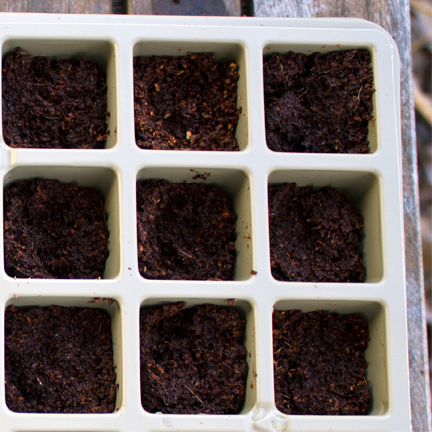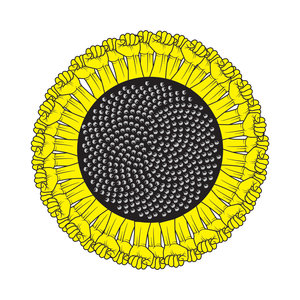What's New in This Year's Garden
 Since the organization meeting for my community garden is coming up next week, and my plot will be available, it makes sense that I should get my seeds started. Most of what I grow will be planted after May 15, so I'm still good. Barely. Life happens so I will just go with the flow, and hope for the best.
I have a couple new varieties this year, as always and I'm looking forward to what's going to happen with them. The Tabaris bean will be new, which I wrote about a little while back.
Since the organization meeting for my community garden is coming up next week, and my plot will be available, it makes sense that I should get my seeds started. Most of what I grow will be planted after May 15, so I'm still good. Barely. Life happens so I will just go with the flow, and hope for the best.
I have a couple new varieties this year, as always and I'm looking forward to what's going to happen with them. The Tabaris bean will be new, which I wrote about a little while back.
Toothache Plant or Szechuan Buttons will be new. It intrigues me. I look forward to growing and photographing it. It seems like a beautiful subject to photograph with the leaves described as bronze-purple, and flowers that look like yellow gumdrops with red eyes, it might be a specimen from a garden in Alice in Wonderland. The leaves numb the mouth, hence the name Toothache Plant. There are references for culinary uses, for cocktails, and as a medicinal herb. It's a member of the Asteraceae family, which includes sunflowers, asters and daisies. Sounds like a fun plant.
Dragon Carrots, which is vegetable that people rave about, will have a place in my garden. Red skin with orange interiors, and chock full of vitamins, they demonstrate that nutrition can be fun. First and foremost, food is nutrition, and when you can grow fresh, organic nutrition, you should take advantage of it. It's a simple concept.
Paris White Cos lettuce is a new to me, but considering Jefferson grew this for 60 years at Monticello, it's been around a long time. It's a French heirloom. I find the French have a nice selection of heirloom lettuces. It's a romaine lettuce, which I enjoy a lot.
Green Pear Tomatoes sound interesting. I like green tomatoes a lot. Aunt Ruby's German Green Beefsteaks are legendary, and rightfully so. They have a sweet, spicy flavor that sets the standard for green tomatoes. The Green Pears are fruity in addition to the traditional spicy sweet green tomato flavor profile from the description. Throw in prolific and I'm sold.
Wild Galápagos Tomatoes are another tomato that captured my imagination. Anything Galápagos related is fascinating, especially the giant tortoises. I wasn't aware that wild tomatoes grew there until I came across these seeds. The seeds I have are one of two varieties endemic to the Galápagos. They are small, yellow-orange grape shaped, and because of their resistance to a number of tomato pests including the whitefly, and resistance to salt. plant breeders use them as source to cross with other varieties. It all sounds great but the key for me, I have a connection to the giant tortoises.
Japanese Black Trifele tomatoes introduces me to the Trifele tomatoes of Russia. Russia contributes a lot of varieties to the heirloom tomato rainbow, and these large, black, pear shape tomatoes are described everywhere, and I do mean everywhere on the Internet as;
In Russia the Trifele varieties of tomatoes (of which there are several colors) are highly prized and command big prices.
Where the Japanese in the name comes from I can't find a source for that because of the above sentence defines the tomato on the Google. I did find a source for the red, pink, and yellow Trifele varieties, Amishlandseeds.com, scroll through this interesting collection of Russian varieties to find them. Gotta love looking at Russian tomatoes with Japanese in their name on a website called Amish Land. A rainbow indeed.
Black tomatoes are some of the most flavorful around. These are compact, determinate potato leaf plants that produce all season, and can handle all types of weather from what I read. I'll see if they can handle the oppressive Jersey July humidity.
Sungold Tomato seeds were shared with me by Carol Ann, a good friend. They are sweet, early and have notes of fruit. The color is described as orange, tangerine, apricot or gold. I'll take any or all of those colors. They will be a nice contrast with the Green Pear described earlier, and the Black Cherry that I will be growing.
And finally, Speckled Roman, also from my friend Carol Ann, who raves about these paste tomatoes. Red with orange stripes, just the name alone makes want to grow them. Speckled has a gesture of humor to me, which I love. They were developed by John Senson of the Seed Savers Exchange, and are said to be a cross between Antique Roman and Banana Legs.
That's what's new this year. Now, if the weather cooperates...
